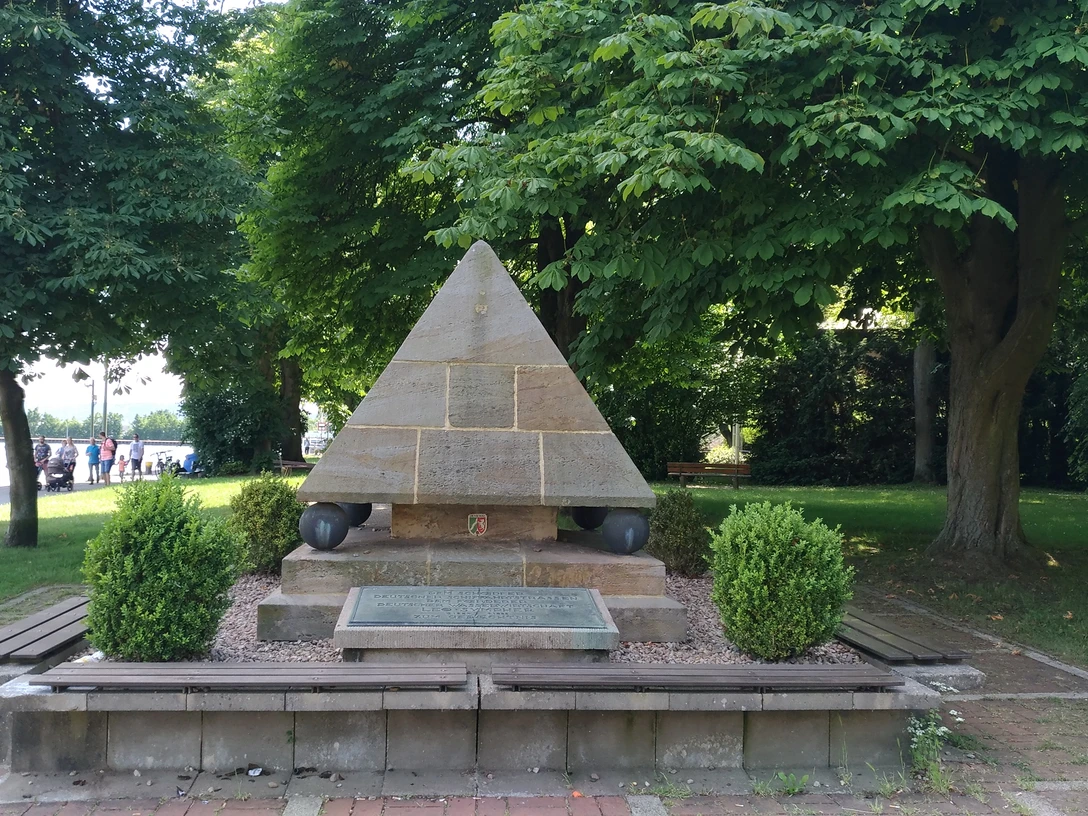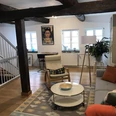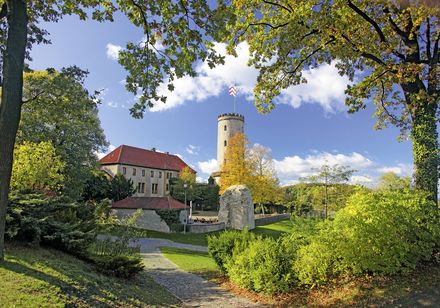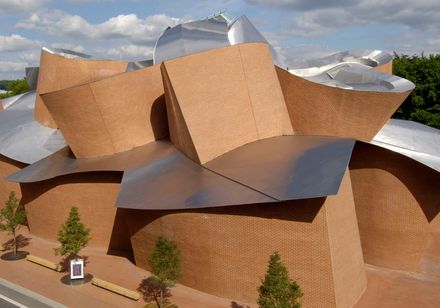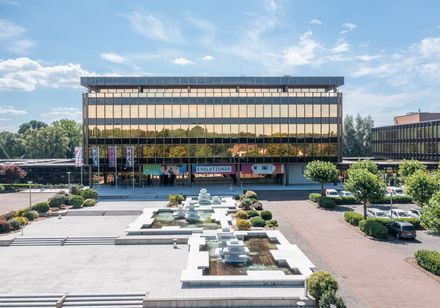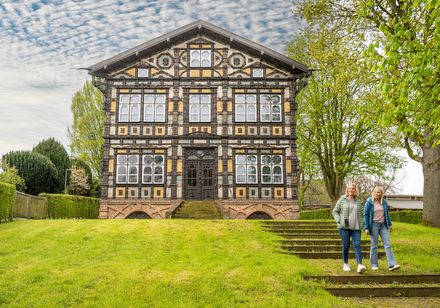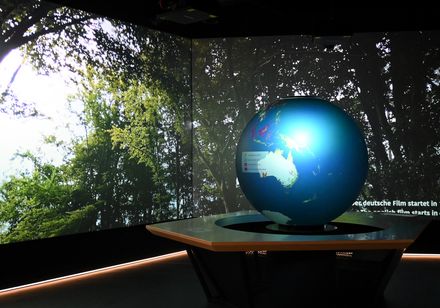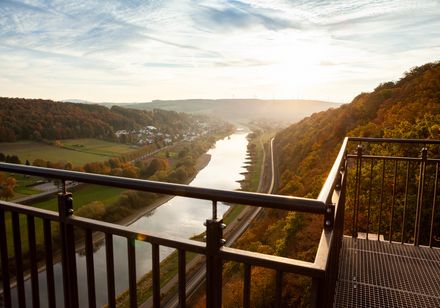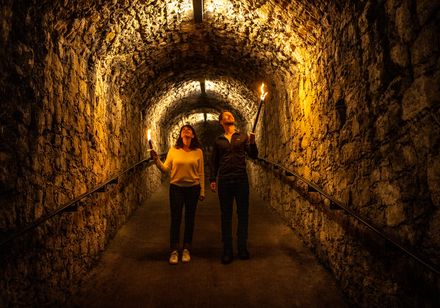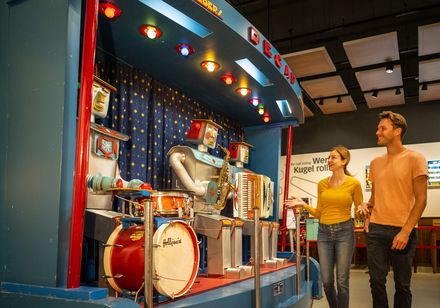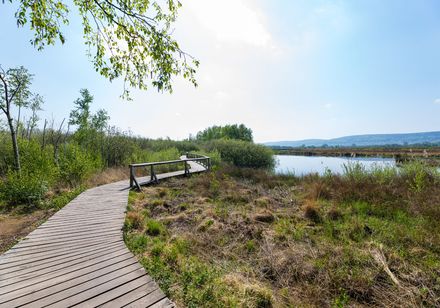The sandstone pyramid in the vicinity of the exhibition hall and concert pavilion was originally part of a larger memorial complex on the south bank of the Mittelland Canal and commemorates a man whose plans gave important impetus to canal construction in western Germany.
Leo Sympher was born on October 19, 1854 in Hannoversch Münden. However, his first professional relationship with water proved to be problematic: in 1871, he joined the young Imperial Navy as an officer candidate, but had to leave in 1873 due to a visual impairment.
Sympher instead studied engineering at the Technical University in Hanover. Between his state examinations, he gained practical experience building canals in Lorraine, East Prussia and Hungary. From 1883, Sympher was a member of the hydraulic engineering department of the Royal Prussian Ministry of Public Works. There he proved to be an expert in canal planning in western Germany, which the Prussian state gradually pushed through against massive political resistance, especially from the conservative milieu.
A look at the issues of the "Minden-Lübbecker Kreisblatt" between 1880 and 1910 shows the struggle for canal construction, not least the Ems-Weser Canal, the first section of today's Mittelland Canal. Reports on meetings of the Prussian Landtag and Herrenhaus, local resolutions for and against, journalistic smokescreens, compromise proposals and all kinds of diversions - in the field of planning policy opinion-forming, the German Empire proved to be quite a modern polity.
Symphers' masterpiece was the "Water Management Bill" of 1901, without which there would probably not have been a Mittelland Canal any time soon. He managed to refute the arguments of the opponents. For example, when Brunswick and Saxon mine owners feared competition from Ruhr coal, Sympher was able to point to the rapidly increasing fuel requirements of the capital Berlin as compensation. Nevertheless, the canal construction bill initially failed in the Prussian parliament - it was only gradually possible to overcome the resistance of the landowners in the eastern provinces, who feared cheap imported grain as well as the migration of the rural population. In 1905, the "Water Management Bill" received majority support - at the cost that the canal was initially only built as far as Hanover to appease the conservatives.
Sympher managed the mammoth construction project from Minden, which dragged on until the First World War. He then planned further canal construction from Hanover to Magdeburg. Until his death, Sympher was committed to the expansion of the Weser and Mittelland Canal as chairman of the Weserbund. He died on January 16, 1922 in Berlin.
Immediately after his death, a working committee was formed at the then Water Engineering Office II Minden for the erection of a memorial stone. However, the inflation of the early 1920s rendered the donations of 2,477,178 marks collected by August 1923 almost worthless. After the currency cut, just 150 marks remained.
The project was only resumed in 1926/27. Initially, the focus was on finding a location. In 1923, construction was planned on the western side of the Oberhafen, almost at the current location. However, the Hanover Waterways Directorate now reserved the right to extend the lock outer harbor to the west, so that the monument was now erected with the help of the city of Minden on the southern embankment of the canal bank east of today's Marienstraße bridge with a view over the canal, coal island and waterway junction in 1928.
Since the middle of the 20th century, the complex has fallen into disrepair; part of the enclosing wall had slipped away in 1967. In the course of the canal expansion for the 1350-tonne European ship in the mid-1970s, the site was abandoned and the Sympher monument was reduced to the pyramid and erected at its current location in 1977.
The pyramid in memory of the engineer Leo Sympher (1854-1922) dates from 1928. Ibbenbühren sandstone was used as the building material. The Minden contractors Homann and Tüting were responsible for executing the plan drawn up by Baurats Lüdtcke (Marburg). The sides of the pyramid are two meters long and 1.70 m high. The pyramid rests on four bronze spheres and a stone block. The spheres are based on Egyptian traditions and symbolically raise the pyramid above its "earthly" surroundings.
The monument originally stood on a 3.70 m high base, for which a 12 x 14.50 m platform had been created on the southern embankment of the canal (east of today's Marienstraße bridge.) Six meters above the water level, the platform and pyramid could hardly be overlooked.
With the expansion of the Mittelland Canal for the so-called "Europe Ship" in 1977, the platform and pedestal were removed and the monument was given its current location at the concert pavilion near the shaft lock. The original dedication plaque has been preserved: TO THE CREATOR/ OF GERMAN SHIPPING ROUTES/ THE PROMOTER/ OF GERMAN WATER MANAGEMENT/ LEO SYMPHER *1854 1922/ IN MEMORY. (mar)
Good to know
Eligibility
Suitable for any weather
for Groups
for Class
for families
for individual guests
Pet allowed
Suitable for the Elderly
for Children of all Ages
Suitable for Pushchair
Payment methods
Directions & Parking facilities
License (master data)
Minden Marketing GmbH - Tourist-Information
Nearby
